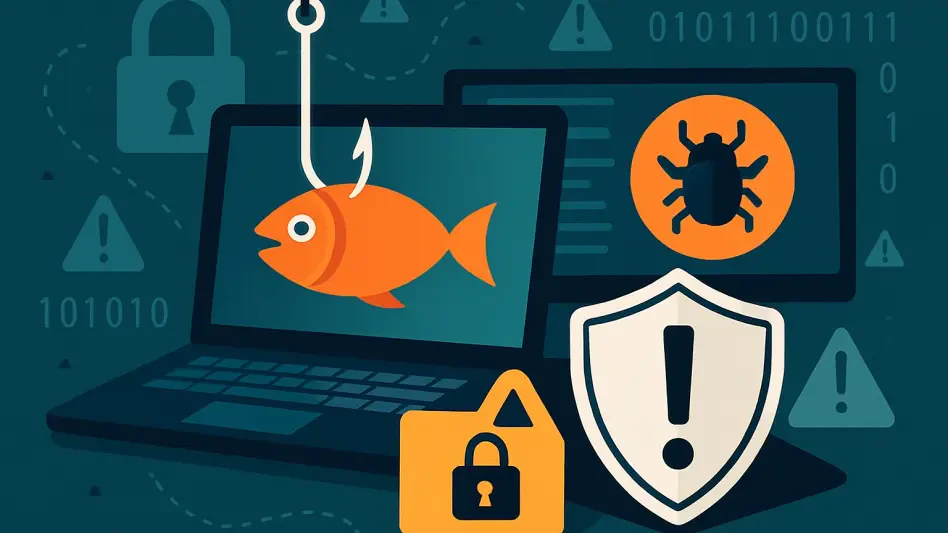The rapidly evolving world of cryptocurrencies faces a critical challenge as phishing scams become increasingly sophisticated, targeting unsuspecting users. As digital currencies gain traction, cybercriminals have honed their tactics, capitalizing on trust within the crypto community to extract sensitive information. Recent incidents involving major crypto companies have underscored the growing threat of phishing schemes as attackers deceptively mimic trusted platforms to solicit vital user data.
The Challenge of Fake Support Channels
Misleading Communication Tactics
Recently, Trezor, renowned for its hardware crypto wallets, reported a surge in phishing emails exploiting its support system. Cybercriminals cunningly impersonated Trezor’s legitimate support team, a move that had the potential to manipulate users into divulging private wallet backups. These fraudulent emails leveraged a contact form exploitation, making them more likely to bypass initial user skepticism. Trezor’s communication reassured users that its email system remained uncompromised. However, legitimate user email addresses were utilized to fabricate credible replies, further illustrating the crafty nature of these scams.
The company has since bolstered its security protocols and sternly advised its users to maintain the confidentiality of their wallet backups. This incident pinpointed the critical need for enhanced vigilance among users, emphasizing the importance of skepticism towards unsolicited communication. With the growing sophistication of phishing techniques, platforms must prioritize user education and transparent communication to prevent potential breaches and permanently shield sensitive data.
Immediate and Strategic Responses
Phishing attacks highlight the urgency for immediate responses and strategic planning in dealing with cyber threats. Trezor’s proactive approach in alerting users about the phishing threat and concurrently addressing vulnerabilities showcases an effective defensive strategy. These actions underscore the necessity for cryptocurrency platforms to remain agile, recognizing that technological solutions and active user engagement are paramount.
Attention to quick intervention measures must be paired with long-term strategic planning, focusing on fostering a robust security culture. As threats evolve, organizations need to implement adaptive security measures and innovate continuously, balancing immediate responses with strategic foresight. By focusing on these aspects, crypto companies and users alike can build resilience against this burgeoning threat, promoting a more secure digital environment.
Breaches Beyond a Single Platform
CoinMarketCap’s Experience with Phishing
CoinMarketCap, a leading crypto market analysis site, encountered a phishing scare when malicious pop-ups infiltrated its interface, allegedly soliciting wallet verifications from users. This unauthorized action raised significant concerns within the crypto community, prompting CoinMarketCap to swiftly delete the misleading pop-ups. The incident triggered an internal investigation aimed at identifying and addressing the breach’s origin. CoinMarketCap’s encounter with phishing scams highlights a broader platform responsibility essential in safeguarding user data and maintaining trust.
The CoinMarketCap case illustrates how phishing schemes are no longer isolated occurrences but pervasive challenges within the crypto ecosystem, affecting even established platforms. Comprehensive user education efforts and knowledge sharing within the community are paramount in tackling these schemes. Users must develop a keen sense of awareness and verification practices to identify potential threats, while companies must refine their technical defenses to counteract increasingly complex attacks.
The Collaborative Path Forward
Given the continual advancement of phishing techniques, it is critical for platforms and users to coalesce in the fight against digital threats. Companies and individuals reliant on crypto must jointly redefine their approaches to cybersecurity through collaboration and information sharing. Providing a robust framework to tackle these threats involves technological innovation, policy development, and collaboration across sectors to collectively counteract phishing scams.
The crypto community must foster a shared responsibility ethos, aligning individual actions with collective security initiatives. As attacks grow in complexity, a forward-thinking and cooperative stance will empower both platforms and users to safeguard valuable digital assets and personal data efficiently. Building resilient defense mechanisms against phishing within the collective awareness of the crypto ecosystem will pave the way for future security advancements and reinforce user confidence across platforms.
Safeguarding the Future of Crypto
The fast-paced development of cryptocurrencies has led to a pressing issue: phishing scams that grow increasingly sophisticated, preying on unsuspecting users. As digital currencies become mainstream, cybercriminals have refined their methods, exploiting the trust embedded in the crypto community to pilfer confidential data. These criminals craft convincing replicas of legitimate platforms, inducing users to unwittingly surrender critical information. Recently, notable incidents involving prominent crypto firms have highlighted the expanding menace posed by phishing attacks. These fraudsters impersonate trusted services and leverage the community’s inherent trust to extract sensitive user details. The frequency and complexity of these scams necessitate heightened vigilance and adaptive security measures. Crypto enthusiasts and companies must prioritize educating users about potential threats and implement advanced security protocols to safeguard against these deceptive practices, reinforcing trust and safety within the burgeoning digital currency landscape.








